-
 bitcoin
bitcoin $109667.069529 USD
-3.03% -
 ethereum
ethereum $3936.685804 USD
-4.07% -
 tether
tether $1.000493 USD
0.01% -
 xrp
xrp $2.771823 USD
-4.74% -
 bnb
bnb $957.805027 USD
-5.34% -
 solana
solana $196.735100 USD
-6.68% -
 usd-coin
usd-coin $0.999727 USD
-0.01% -
 dogecoin
dogecoin $0.227355 USD
-5.12% -
 tron
tron $0.335205 USD
-0.81% -
 cardano
cardano $0.779256 USD
-3.59% -
 ethena-usde
ethena-usde $0.999900 USD
-0.06% -
 hyperliquid
hyperliquid $42.492095 USD
-6.61% -
 chainlink
chainlink $20.501853 USD
-4.34% -
 avalanche
avalanche $28.952606 USD
-11.21% -
 stellar
stellar $0.356038 USD
-3.93%
How to cancel a pending transaction on Upbit?
Pending transactions on Upbit remain unconfirmed until miners process them, with delays often caused by low fees or network congestion.
Sep 17, 2025 at 12:36 am
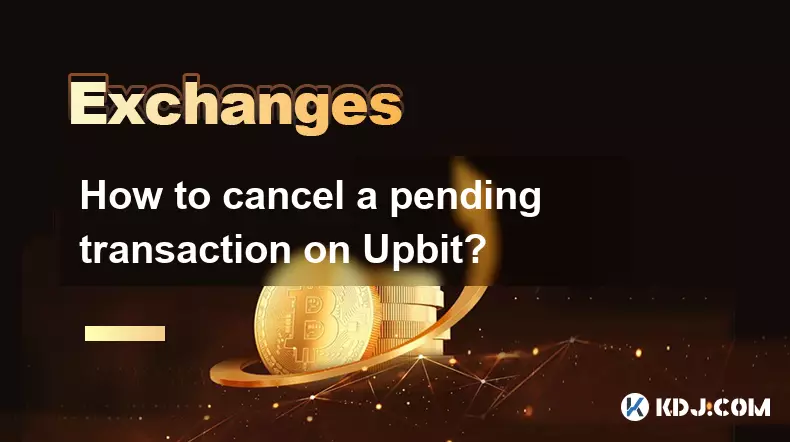
Understanding Pending Transactions on Upbit
1. When a transaction is initiated on Upbit, it enters a pending state before being confirmed on the blockchain. This phase occurs after the user submits the transaction but before miners or validators process it. The transaction remains visible in the wallet’s transaction history with a “Pending” status.
2. The duration of the pending state depends on network congestion and the transaction fee attached. Lower fees often result in slower confirmations, especially during peak usage times on networks like Bitcoin or Ethereum. Upbit does not control the blockchain’s processing speed, so users must wait or take alternative measures.
3. Upbit itself does not provide a direct “cancel” button for transactions once broadcasted. This limitation stems from the decentralized nature of blockchain technology. Once a transaction is sent to the network, it cannot be altered or revoked by the exchange.
4. Users should verify transaction details before submission, including the recipient address, amount, and network fee. Errors or omissions at this stage can lead to irreversible outcomes, especially if the transaction confirms with incorrect data.
5. Some wallets and blockchain networks support transaction replacement mechanisms, such as Replace-By-Fee (RBF) or Ethereum’s nonce-based cancellation. However, Upbit’s internal wallet system does not expose these tools directly to users, limiting manual intervention options.
Strategies to Handle Unconfirmed Transactions
1. One method to effectively cancel a pending transaction involves sending a conflicting transaction with a higher fee using the same nonce. This technique, commonly used in Ethereum-based networks, overwrites the original pending transaction. However, this requires access to the private key or advanced wallet tools not available through Upbit’s interface.
2. If the transaction remains pending for an extended period, it may eventually drop from the mempool due to inactivity. Different blockchains have varying rules for how long unconfirmed transactions are retained. For example, Bitcoin nodes typically remove unconfirmed transactions after 72 hours if not included in a block.
3. Users can monitor the transaction hash (TXID) using blockchain explorers to track its status. If the transaction disappears from the explorer without confirmation, it is likely dropped and the funds are returned to the original wallet.
4. Contacting Upbit support may provide clarity, but they cannot cancel transactions on the blockchain. Their role is limited to verifying that the transaction was correctly broadcasted and offering guidance based on network conditions.
5. Setting higher gas fees in future transactions can prevent prolonged pending states. Upbit allows users to select fee levels during withdrawal, though options may be limited compared to self-custody wallets.
Preventive Measures for Future Transactions
1. Always double-check withdrawal addresses and network types before confirming. A single incorrect character can result in permanent loss, especially with irreversible blockchains.
2. Use the network’s recommended fee rate during times of congestion. Tools like ETH Gas Station or Bitcoin Fee Estimators can guide optimal fee selection, though Upbit may automate this process internally.
3. Consider using test transactions for large transfers. Sending a small amount first ensures the address and network are correct before committing larger sums.
4. Avoid initiating multiple transactions from the same wallet in quick succession. This can cause nonce conflicts, especially on Ethereum, leading to stuck transactions.
5. Keep your withdrawal history and transaction IDs organized for faster troubleshooting. Having immediate access to TXIDs helps when consulting support or checking status on explorers.
Frequently Asked Questions
Can Upbit reverse a transaction if I send it to the wrong address?No, Upbit cannot reverse blockchain transactions. Once confirmed, transfers are immutable. If funds are sent to an incorrect address, recovery is only possible if the recipient voluntarily returns them.
Why does my transaction stay pending for hours?Low transaction fees are the most common cause. During network congestion, miners prioritize transactions with higher fees. If your fee is too low, the transaction may wait in the mempool for confirmation or eventually drop.
Is it safe to resend a transaction with a higher fee?Yes, but only if done correctly. On networks like Ethereum, you can replace a pending transaction by sending a new one with the same nonce and a higher gas price. Doing this incorrectly may result in two processed transactions.
What happens if a pending transaction never confirms?If a transaction remains unconfirmed beyond the network’s mempool retention period, nodes will drop it. The funds return to your wallet automatically, and you can attempt the transfer again with adjusted fees.
Disclaimer:info@kdj.com
The information provided is not trading advice. kdj.com does not assume any responsibility for any investments made based on the information provided in this article. Cryptocurrencies are highly volatile and it is highly recommended that you invest with caution after thorough research!
If you believe that the content used on this website infringes your copyright, please contact us immediately (info@kdj.com) and we will delete it promptly.
- Coin Value Challenge: Navigating the Shifting Sands of Crypto and Tradition
- 2025-09-26 08:25:13
- XRP, Cardano, and Opportunity: Navigating the Crypto Landscape in 2025
- 2025-09-26 08:25:13
- Pepe, Price Prediction, and Returns: Is the Meme Magic Fading?
- 2025-09-26 08:45:14
- BullZilla: The Meme Coin Behemoth with 100x Potential?
- 2025-09-26 08:30:01
- Base's Blockchain Base: Developers Drive TVL Goal to $5 Billion and Beyond
- 2025-09-26 08:45:14
- MoonBull Presale: Your Ticket to the Next Pepe-Level Crypto Opportunity?
- 2025-09-26 08:30:01
Related knowledge
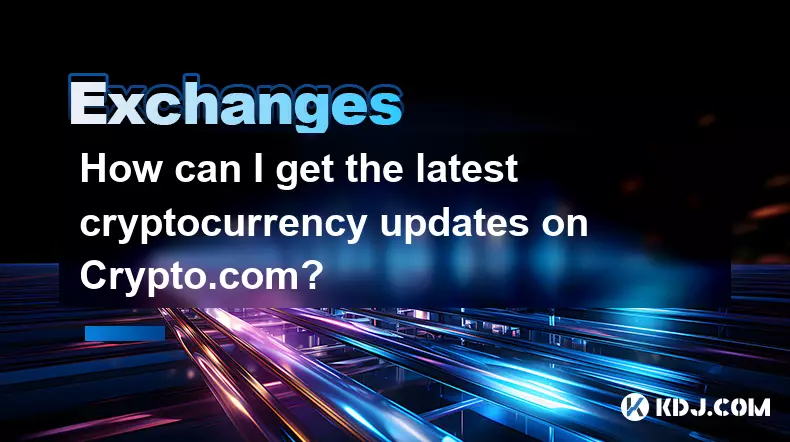
How can I get the latest cryptocurrency updates on Crypto.com?
Sep 26,2025 at 07:54am
Accessing Real-Time Crypto Market Data on Crypto.com1. Navigate to the Crypto.com website or open the mobile application to access live price charts a...
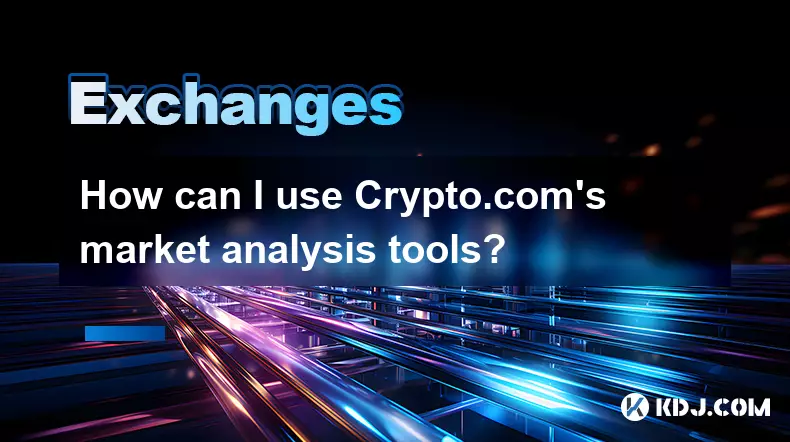
How can I use Crypto.com's market analysis tools?
Sep 23,2025 at 01:54am
Understanding Crypto.com’s Market Analysis Dashboard1. Accessing the market analysis tools begins with logging into your Crypto.com account through th...

How can I unlink my Crypto.com payment method?
Sep 23,2025 at 12:54am
Understanding Payment Methods on Crypto.com1. Crypto.com allows users to link various payment methods including credit cards, debit cards, and bank ac...
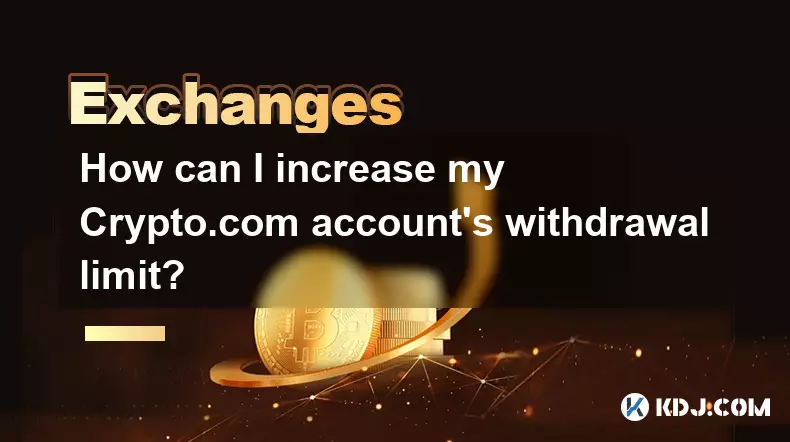
How can I increase my Crypto.com account's withdrawal limit?
Sep 23,2025 at 10:37am
Understanding Withdrawal Limits on Crypto.com1. Crypto.com enforces withdrawal limits to enhance account security and comply with regulatory standards...
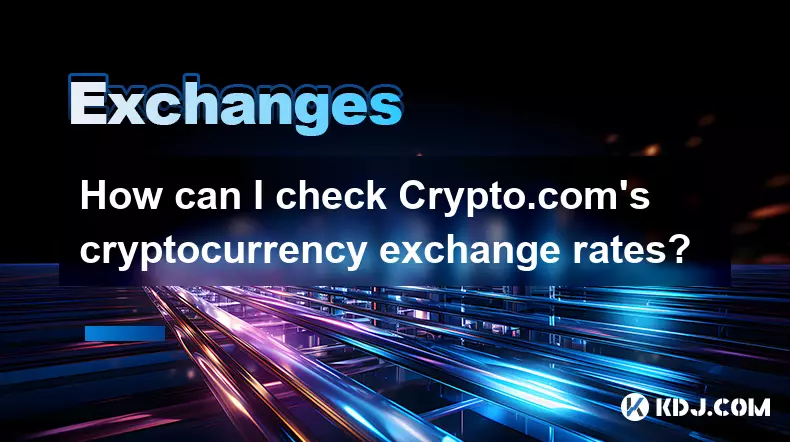
How can I check Crypto.com's cryptocurrency exchange rates?
Sep 26,2025 at 01:54am
Accessing Real-Time Crypto.com Exchange Rates1. Navigate to the official Crypto.com website or open the mobile application. Both platforms display liv...
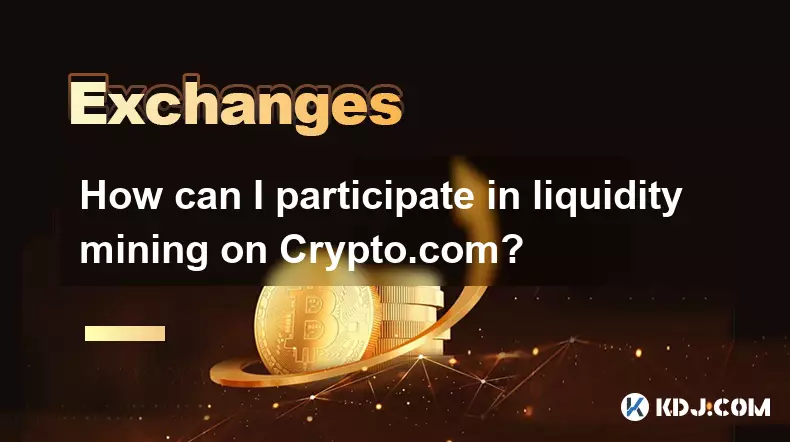
How can I participate in liquidity mining on Crypto.com?
Sep 23,2025 at 09:36am
Understanding Liquidity Mining on Crypto.com1. Liquidity mining allows users to earn rewards by providing assets to decentralized finance (DeFi) pools...

How can I get the latest cryptocurrency updates on Crypto.com?
Sep 26,2025 at 07:54am
Accessing Real-Time Crypto Market Data on Crypto.com1. Navigate to the Crypto.com website or open the mobile application to access live price charts a...

How can I use Crypto.com's market analysis tools?
Sep 23,2025 at 01:54am
Understanding Crypto.com’s Market Analysis Dashboard1. Accessing the market analysis tools begins with logging into your Crypto.com account through th...

How can I unlink my Crypto.com payment method?
Sep 23,2025 at 12:54am
Understanding Payment Methods on Crypto.com1. Crypto.com allows users to link various payment methods including credit cards, debit cards, and bank ac...

How can I increase my Crypto.com account's withdrawal limit?
Sep 23,2025 at 10:37am
Understanding Withdrawal Limits on Crypto.com1. Crypto.com enforces withdrawal limits to enhance account security and comply with regulatory standards...

How can I check Crypto.com's cryptocurrency exchange rates?
Sep 26,2025 at 01:54am
Accessing Real-Time Crypto.com Exchange Rates1. Navigate to the official Crypto.com website or open the mobile application. Both platforms display liv...

How can I participate in liquidity mining on Crypto.com?
Sep 23,2025 at 09:36am
Understanding Liquidity Mining on Crypto.com1. Liquidity mining allows users to earn rewards by providing assets to decentralized finance (DeFi) pools...
See all articles










































































